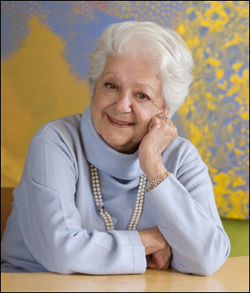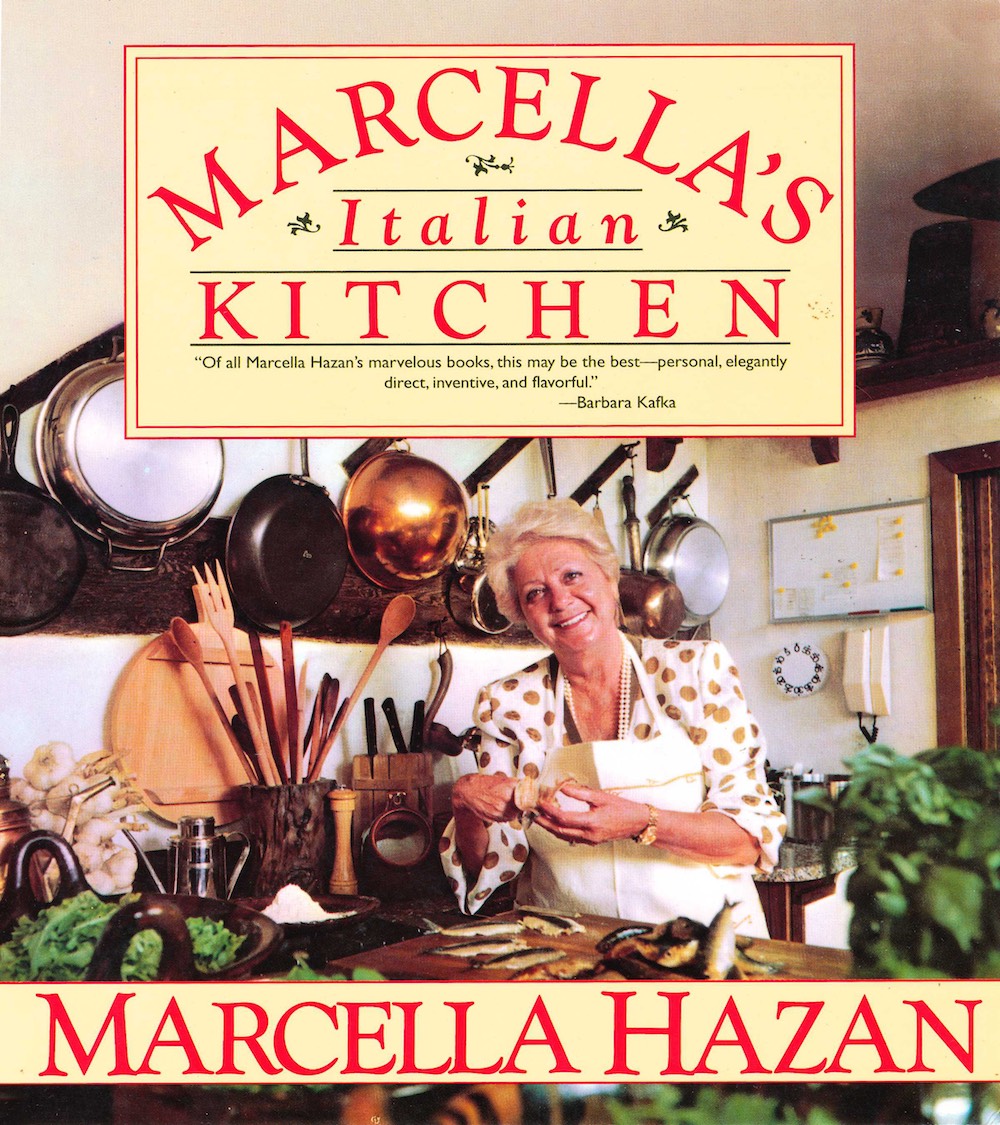The incomparable influence of Marcella Hazan
Why Marcella Hazan’s recipes have cult status
by Katy Salter
Over the years Marcella Hazan’s Italian recipes have achieved cult status: her three ingredient tomato sauce, using canned tomatoes, an un-chopped onion and butter is nothing short of life-changing. What makes her ubiquity remarkable, is that Hazan’s first cookbook was published in 1973. Hazan passed away, aged 89, in 2013; so why do her recipes remain so popular today?
Food writer and ckbk advisor Felicity Cloake, who has tested many Hazan classics, like Zabaglione and lasagne verde, for her Guardian column, ‘How to cook the perfect…’explains her allure: “Marcella exudes quiet authority and authenticity, but always tempered by practicality, too. Her recipes are rarely needlessly fussy or complicated,”
While food writing was clearly Hazan’s calling, she never set out to be a cook. An Italian academic and writer who moved to New York in the 1950s, speaking very little English, Marcella didn’t even cook before she was married. Hazan was born Marcella Polini, in the Northern Italian town of Cesenatico, in 1924. She graduated from the University of Ferrara with a doctorate in biology and natural sciences. But her life took an unexpected turn when she married Victor Hazan, an Italian American. The pair moved to New York City, where Marcella – who spoke no English – learnt to cook for her new husband, first by consulting Italian cookbooks, and then – as her confidence grew – by memory and instinct. Life took another surprising twist when Marcella attended a Chinese cooking class. The teacher quit after the first class and Hazan’s fellow students suggested she teach them Italian dishes instead. Her popular lessons, held in her Manhattan apartment, caught the attention of New York Times Food Editor, Craig Claiborne. He came for lunch, wrote a story, and Hazan’s new life as a culinary star was born.
Hazan wrote five bestselling cookbooks between 1973–2004. Two of her bestsellers, The Classic Italian Cookbook (1973) and More Classic Italian Cooking (1978) were reissued as a compendium The Essentials of Classic Italian Cooking in 1992. For many food lovers Essentials is the Bible of Italian cooking, but food writer Kay Plunkett-Hogge says her heart belongs to Marcella Cucina (1997). “Marcella Cucina is like an old friend and reminds me fondly of another lifetime: I bought Marcella Cucina when I lived in New York in the late 1990s. With Marcella’s gentle guidance I learned to make the most wonderful cranberry-bean and cime di rapa soup—a hug in a bowl on harsh Eastern winter nights. The breaded veal patties with capers and her chicken fricassee with cherry tomatoes and olives both became staples.”
Hazan’s recipes remain popular for two simple reasons: they’re authentic, and they work. “Hazan’s recipes have endured because they are completely reliable,” says food writer Lucy Malouf. “Marcella’s mantra was that, in Italian cooking, flavor is everything, and all her recipes are constructed with this in mind. They are clear, detailed and easy to follow, as you’d expect from a teacher who ran a cooking school.”
There’s no cavalier ‘throw in a little bit of this’ in a Hazan recipe. In fact, for 21st Century cooks, more familiar with enthusiastic TV chefs and the chatty, casual tone of many bestselling authors, Hazan’s prose might seem a little . . . strict. “Marcella’s voice is opinionated – sometimes a little bossy, even – but you never doubt her for a moment. She had a great gift for conveying information in an appealing and clear manner: there’s detail, but nothing extraneous, which makes her recipes feel entirely manageable,” says Malouf.
Hazan’s influence was probably greatest in the US. When she passed away in 2013, The New York Times called her ‘The Author Who Changed the Way Americans Cook Italian Food’, and invited readers to discuss their favorite Hazan dishes, including Bolognese and roast chicken. Her books enjoyed success in other countries, too. Classic Italian Cookbook was adapted for a British audience by Anna del Conte, herself an acclaimed Italian-born food writer (and a favorite of Nigella Lawson).
Hazan’s recipes live on not just in her books, but online, where they are the subject of much devotion and countless articles. Her books were compendiums of all the major Italian dishes, with plenty of subtle but important regional variations for key dishes: fresh pasta, risotto, sauces for dried pasta (she believed that some types of pasta, like spaghetti, were better bought dried). Browse through Marcella’s Italian Kitchen, for example, and you’ll also find plenty of lesser-known gems, like riso nero, an inky-black rice cake from Sicily, made with Arborio rice, espresso, almonds and chocolate.
Everyone has their favorite Marcella Hazan recipe, and what can seem like quirky methods (putting butter in tomato sauce, or milk in a Bolognese), always come good in the testing. Trust Marcella and you’ll never go wrong.
Marcella Hazan is a featured author on ckbk, home to the world's best cookbooks and recipes for all cooks and every appetite.



